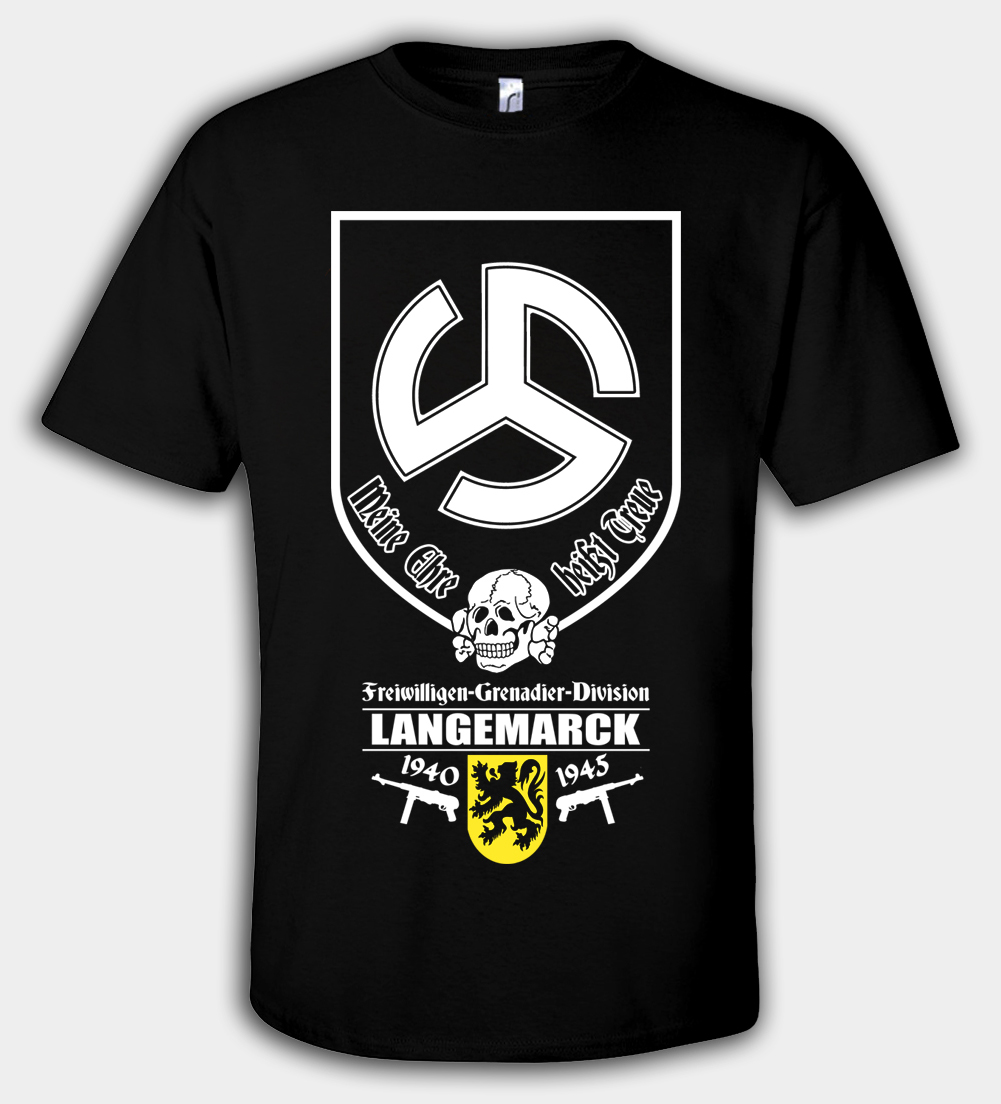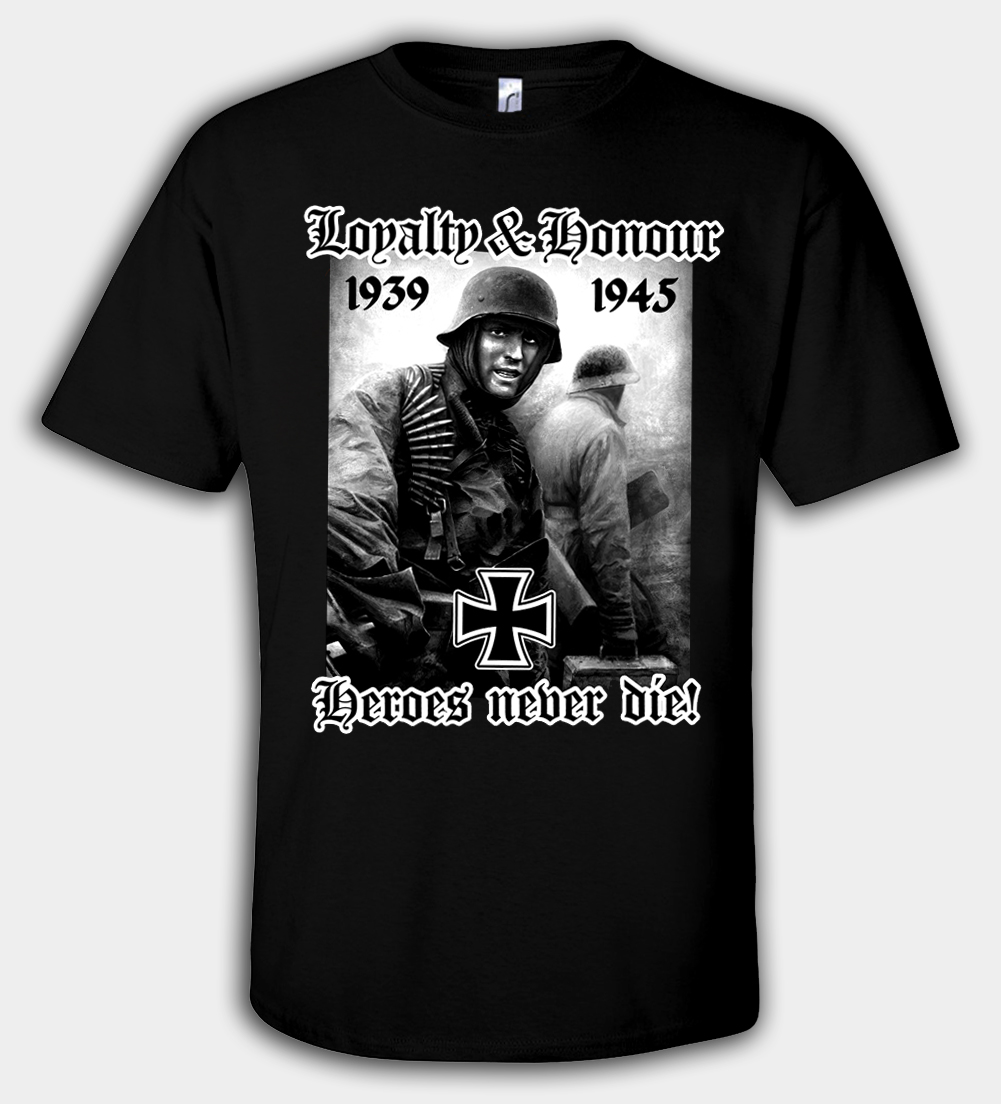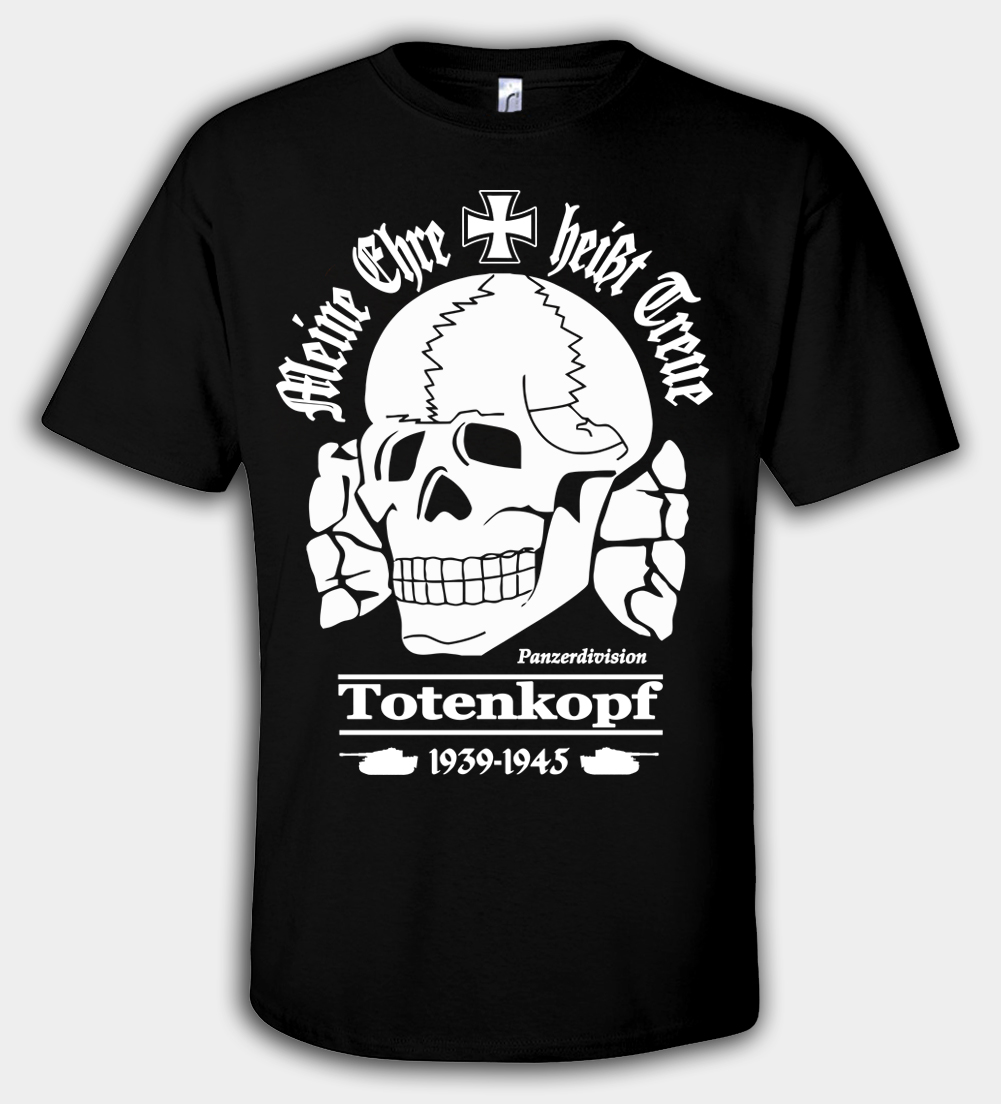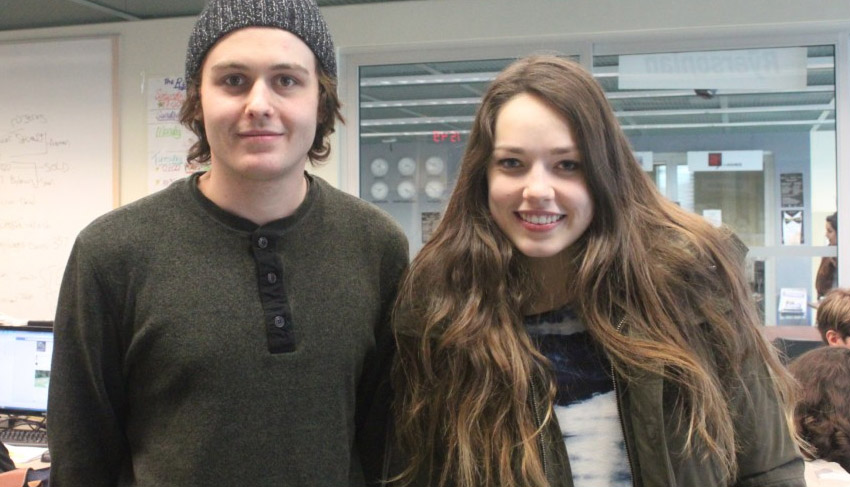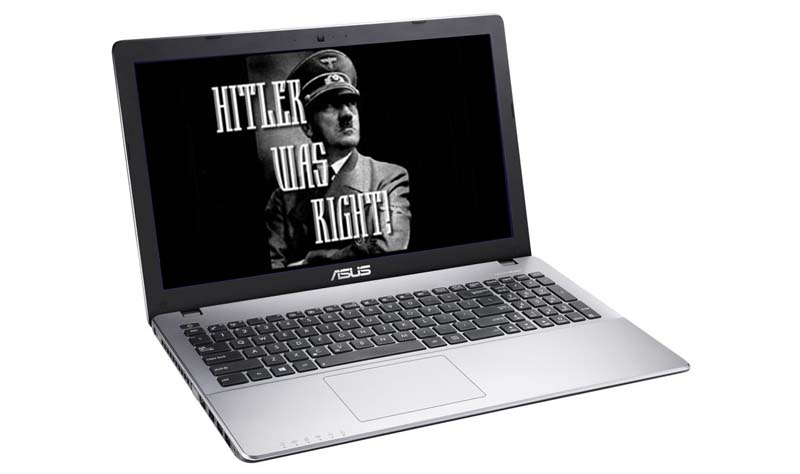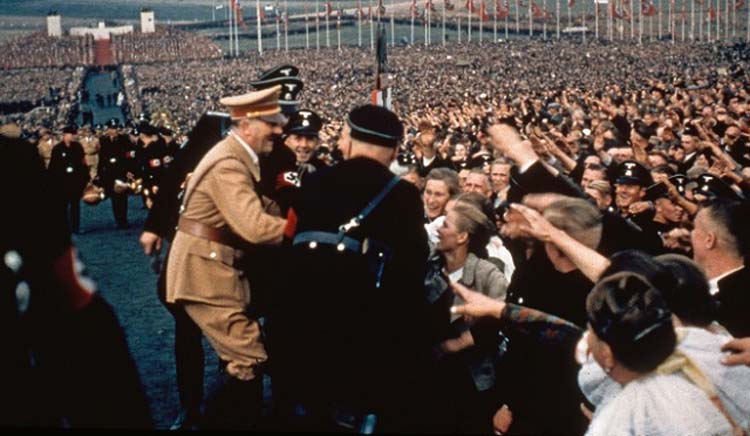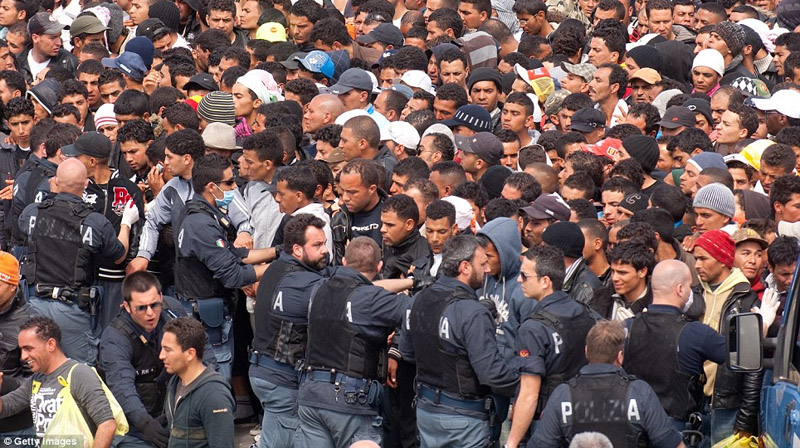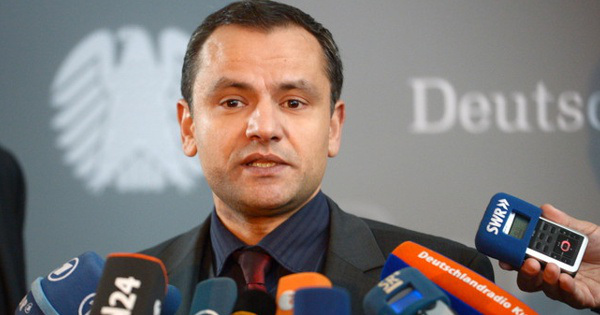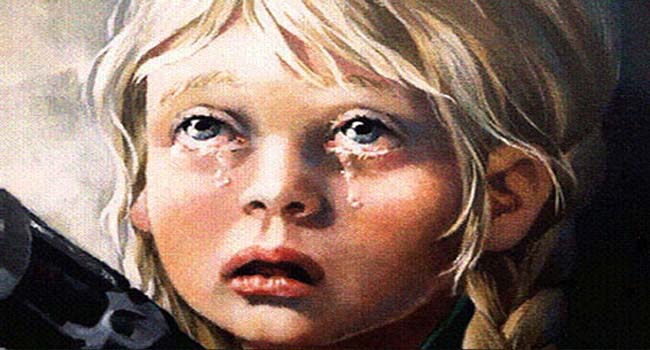The Life of a National Socialist Hero Before, During and After the WWII: Otto Skorzeny
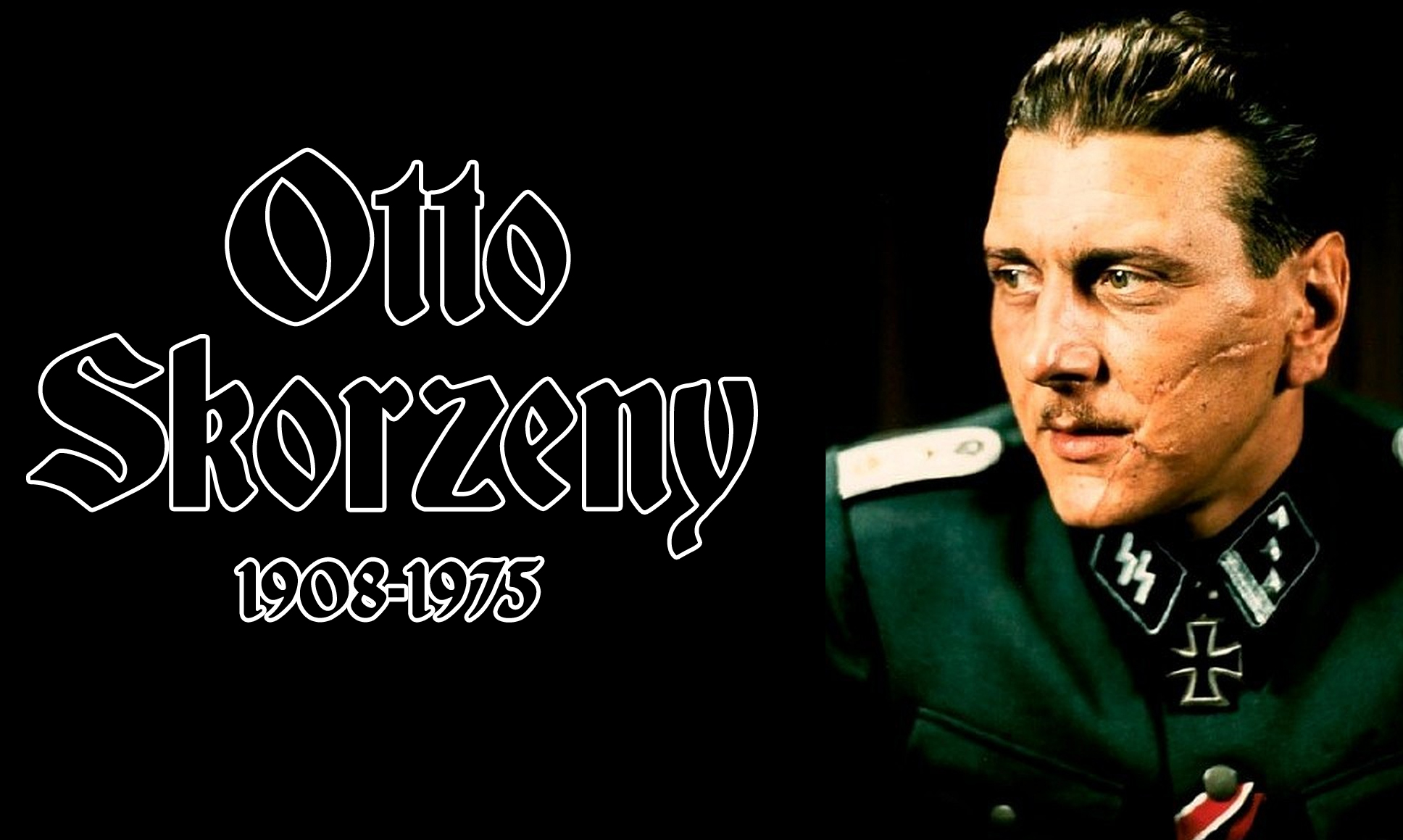 Otto Skorzeny was a legendary Waffen-SS commander who never betrayed his leader and his comrades.
Otto Skorzeny was a legendary Waffen-SS commander who never betrayed his leader and his comrades.
Skorzeny was born on June 12, 1908 in Vienna. After his final examination, he studied engine-building at the technical University of Vienna and became an engineer in 1931. In this period, he was among other things politically educated through the membership in a student’s corps and his struggle for the union of Germany and Austria. In 1932, he became a member of the NSDAP, which was however banned in 1933.
After Austria had become a part of the German Reich in March 1938, Skorzeny became a member of the SS. From September 1939, Skorzeny was trained with the Leibstandarte SS Adolf Hitler in Berlin. He took part in the campaign in the west in the ranks of the regiment Germania and on January 30, 1941 he was promoted to SS-Untersturmführer.
After he had marched into Serbia with the German troops in April 1941, he took part in the campaign in the east in the ranks of the SS division Das Reich. He was decorated with the Iron Cross and fought east of Kiev against encircled Soviet formations. After that, he advanced with his division on Moscow.
April 1943, a new task was offered to Skorzeny. For the special course of instruction Oranienburg of the Waffen-SS, a new chief was needed, who at the same time had to build up in Friedrichsthal near Oranienburg a school to train agents to carry out operations behind the enemy lines. Skorzeny accepted both missions and was detached as a reserve SS-Obersturmführer to Amt IV, SD-Ausland (external intelligence service) of the Reichssicherheitshauptamt (RSHA). Together with his adjutant, SS-Obersturmführer Karl Radl, he recruited suitable soldiers for the new unit and studied thoroughly all reports on training and operating commando troops. Some tasks of the commando troop were: infantry and pioneer training, handling grenade launchers, light artillery and tanks, chauffeur training for motorbike, cart, motor boat and locomotive, as well as sport and horse exercises. Soon, an important mission would have to be carried out.
On July 25, 1943, Benito Mussolini was - as a result of a conspiracy contrived by the high ranking functionaries of the Fascist Party - deposed, arrested and brought to an unknown place. Skorzeny was thereupon, together with five other officers, summoned to the Führerhauptquartier. The Führer chose him for a mission, which he discussed with him confidentially. He was convinced that Italy, under a government appointed by the king, would soon end the war and extradite the Duce to the Allies. Skorzeny’s mission was to discover where Mussolini was detained and liberate him. The operation would have to be prepared and carried out in complete secrecy.
After he had held a consultation with General Student, Skorzeny gave to Berlin - from the Führerhauptquartier - his instructions for the formation of an Einsatzgruppe. Before daybreak, almost forty men had to be equipped with tropical uniforms, civilian clothes, weapons, explosives, radio receivers, parachutes and new pay-books in order to conceal the presence of members of the Waffen SS in Italy. Thanks to the police attaché at the German Embassy in Rome, SS–Sturmführer Herbert Kappler, Mussolini’s ever changing places of detainment could be discovered. One of the places where Mussolini was detained was the coast fortress Maddalena, north of Sardinia. Skorzeny made preparations to liberate Mussolini through an unexpected attack of soldiers, who would have to be brought to the island by motor torpedo boats and overcome the Italian guards. The operation, which was to be carried out on August 28, 1943, however, had to be canceled, because the new Italian government apparently knew about the planed operation and consequently had Mussolini taken away at the last moment. Later, it appeared that the head of the Abwehr, Admiral Canaris, who was nothing else but a cowardly traitor, had also betrayed the operation that had been planned for August 28, 1943.
Fortunately, the new place where Mussolini was kept in prison could soon be located. It was the Sport Hotel on the Gran Sasso in the Abruzzen mountains, about 2000 meters elevation. On September 8, 1943, Skorzeny and Radl flew over the area and took photographs of the Gran Sasso. Shortly after, the disarmament of the Italians by German troops could be carried out. Because after the capitulation of the Italian army the extradition of Mussolini to the Allied could be expected, one had to try to liberate him as soon as possible. An attack on the hotel was only possible with paratroopers in gliders. On short notice, twelve such aircraft were ordered from Southern France to Italy. The aircraft could transport nine men in addition to the pilot. Skorzeny chose a pasture around the hotel as the landing place. At the same time, a battalion of paratroopers had to occupy the ground station of a cable railway in the valley leading to the hotel. Karl Radl had the idea to have the Carabiniere General Soleti, who was known to the guards, accompany them and let him give the order not to shoot at German soldiers.
On September 12 the operation could start. General Student took his leave of 17 men of the Waffen SS and 90 paratroopers at the airport Pratica di Mare. Once above the landing area, Skorzeny noticed, however, that the surface he had taken for a pasture was in reality a ski run. It was hence not possible to land there. Skorenzy now ordered the pilot to land in nose-dive as close to the hotel as possible. His glider came to a standstill only 15 meters from the building. Skorzeny, the men from his aircraft and Carabiniere General Soleti ran to the hotel as fast as possible. Karl Radl, who landed with his glider just after Skorzeny, described this moment in his book "Befreier fallen vom Himmel":
Skorzeny and his men move in the direction of the hotel. There’s an Italian guard there. General Soleti calls out to him: "Don’t shoot! Don’t shoot!" We leave the guard and go into the hotel. A door flies open. It is the radio room. An Italian soldier sits behind the radio. We snatch him from his chair. One, two blows with the butt of the submachine gun and the radio is out of order. That’s that. They can not call for help anymore. No door, however, leaders out of this cellar. Back outside. We go around the corner of the addition. Another guard. "Don’t shoot! Don’t shoot!", the general calls. This guard, too, does not shoot. There, a concrete wall two meters high. Skorzeny clumbs over it on the shoulders of his men. The others climb the wall the same way. They stand on the terrace in front of the façade of the house and walk to the main entrance.
Then my aircraft starts to descend. Perhaps one minute has passed. It is a matter of seconds. My machine plops down, is lifted up once, is flung another fifty meters, and finally lands about 100 meters from the hotel. We run to the chief’s assistance. He now sees the Duce at the window. "Duce, get away from the window, away from the window!", Skorzeny shouts. He apparently fears the Duce could be accidently shot. We approach the hotel. Before I reach the entrance, Skorenzy and Schwerdt have gained access, have cleared a way through the carabinieri without using their weapons. The carabinieri are very upset and want to leave the hotel. They must have just had their afternoon rest. Some are carrying their submachine guns and some are unarmed. They see their general, whom many knew, and no one shoots. Skorzeny and Schwerdt run upstairs into the completely unknown hotel.
Skorzeny opens a door on the second floor. It is the right one. Inside the room stands Mussolini. With him are two officers and a man in civilian clothes. They rush outside. Then they are alone. Then the NCOs Gföller and Gläsnert turn up in the doorway. When I arrive, Skorzeny simply reports: "Duce, the Führer sends us to liberate you!" Mussolini is very moved. He only answers: "I knew that the Führer would not let me down." He shakes hands with Sorzeny, embraces him, kisses him on the cheeks. The same happens to me, Schwerdt and Wartger.
The Italian commander of the hotel capitulates. Soon a Frieseler Storch lands to bring Mussolini and Skorzeny from the Gran Sasso to an airfield from where they fly to Vienna. There, Skorzeny telephones the Führer, who tells him, "Skorzeny, you have carried out a military operation to a successful conclusion which will become part of history. You have given me back my friend Mussolini. I award you the Knight’s Cross and promote you to SS-Sturmbannführer. I congratulate you."
During the following months, Skorzeny was very busy with the reinforcement of his commando troops and the development of new weapons for their operations. His special formation was transformed into Jagdverband Mitte with five battalions, an instruction battalion and other units. By chance, he had to fulfill another unexpected mission on July 20, 1944. On that day, Colonel Stauffenberg made an attempt to assassinate Adolf Hitler and other functionaries by having a bomb explode during a meeting concerning the military situation in the Führerhauptquartier. After the elimination of the Führer, the reserve troops would have to take over power. The attempt failed, however, and Adolf Hitler was only slightly injured. On July 20, 1944. Skorzeny had just arrived by train from Berlin in Vienna when he learned that troops, already alarmed by the conspirators, were advancing on Berlin. Skorzeny, together with a company of soldiers, marched on the quarters of the commander of the reserve troops, where officers of the army had already arrested the conspirators and shot some of them. Meanwhile, the commander of the reserve troops was liberated, yet relieved of his command. Skorzeny thereupon asked the officers to continue their duties, while he took care of the functioning of the army unit, competent for armament, supply and reserve.
In September 1944 Skorzeny received new orders form the Führer. The Hungarian regent Horthy had made contact with both the western Allies and the Soviets and prepared the capitulation of his country. It was Skorzeny’s task to prevent this. He concentrated his units in the surroundings of Vienna, completed their equipment with new material and vehicles and made his way as a civilian to Budapest. For five weeks he oriented himself to the local circumstances. It appeared that as plenipotentiary of Horthy his son Niklas had gotten in touch with the Soviets through the Yugoslavian partisan leader Tito. A couple of hours later, the Hungarian radio proclaimed that Horthy had reached an armistice agreement with the Soviets. Skorzeny then ordered the occupation of the castle of Budapest, where Horthy as regent had his seat, on the morning of October 16, 1944. Around midnight some of his troops encircled the mountain on which the castle was situated. The others were assembled in a route column by Skorzeny; he wanted to make the impression that their advance toward the castle was an agreed measure. The plan succeeded. The Hungarian guns remained silent and the Hungarian general capitulated. The next day the Hungarian army took an oath to a new government that continued to fight against the Soviets on Germany’s side. A considerable danger for the German troops had been averted, thanks to Skorzeny and his men. When Skorzeny described the operation in Budapest to the Führer, the latter told him: "You have done very well, my dear Skorzeny. I promote you to SS-Obersturmführer as of October 16, 1944 and award you with the German Cross in Gold". Then he informed Skorzeny about his next mission.
In the west, the advance of the English and Americans troops had been stopped at the frontier. The Führer planned a new offensive, which would start in the area between Aachen and Luxemburg, then lead through the Ardennes up to the Channel coast in order to destroy the enemy forces north of the line Bastogne-Brüssels-Antwerp as well as denying the Antwerp port to the Allies. Skorzeny’s task was to take possession of the Meuse bridges between Liège and Namur, with soldiers in English and American uniforms, and to prevent them from being blown up. Besides, small commando units in enemy uniform would, behind American lines, give false orders, jam communications, lead Allied troops astray and cause confusion in their ranks. This operation was certainly effective. Soon, useful reports came in about the situation behind the American lines. For example, the leader of one unit sent an American tank regiment in the wrong direction, destroyed telephone lines and removed road signs. Even more effective, however, was the confusion and sabotage hysteria that broke out behind the American lines.
After the collapse of the eastern front, Skorzeny and his men were ordered to form and hold a bridgehead east of the Oder, near Schwedt, which was intended for future operations against the Red Army. Skorzeny secured the area as ordered and supplemented his four battalions with returning German soldiers, thereby creating the nucleus of the division Schwedt. He also rescued many refugees safely across the Oder. On February 28, 1945 the Führer told him: "Skorzeny, I have to thank you for your achievements on the Oder front. Your bridgehead was the only bright spot for days. I award you the Oak Leaves of the Knight’s Cross and will personally hand it to you within a few days. Then you must tell me about your experiences."
At the end of the war Skorzeny, who had been promoted to SS-Standartenführer on April 20, 1945, was taken into American captivity near Salzburg. In 1947 he was indicted in Dachau for operations with soldiers in enemy uniforms, but acquitted. Until July 1948, he waited in the camp at Darmstadt for his so-called de-nazification hearing, which was, however, postponed time and time again in order to keep him in prison for as long as possible. Therefore, he chose to liberate himself. He stayed in Germany and France for two more years and went to Spain in 1951, were he worked successfully as an engineer. He also assisted with the formation of the Egyptian intelligence service under the name Moukhabarat. An incurable lung disease brought him to Heidelberg in 1975 for medical treatment. There, Hans-Ulrich Rudel and Waldemar Schütz were his last comrades, visiting him before his return to Spain eight days before his death. Otto Skorenzy told them on this occasion about his visit in the Führerhauptquartuer in the autumn of 1944, when the Führer was ill and received him at his bed. The Führer told him that day that Germany had not built the atom bomb, because he did not want to take the responsibility for mankind being destroyed by such a "Teufelswerk".
On July 5, 1975, Otto Skorzeny died in Madrid. His urn was interred in Vienna.
Popular products:
Recent news:
- White Students Turned Away from “Anti-Racism” Seminar for Being White
- Greek PM Warns of "Far-right Threat" in Europe
- The Dark Side of the "Liberation of Europe"
- "Former Republics of the USSR are on their Way to a Nazi Revival", Says Influential Zionist Group
- Mein Kampf: The world’s most dangerous book?
- Xenophobia Rising: Rome Removes Africans from Refugee Centre Besieged by Nationalists
- "If Jews Leave, Europe will Face Economic Disaster", Jewish Leader Warns
- Angry, White and Proud: New Documentary on English Nationalism (VIDEO)
- Golden Dawn Leadership to Stand Trial on Hitler’s Birthday
- Wreck of Kriegsmarine U-boat Located in Java Sea
- Germany’s Biggest Anti-Racism Crusader Pleads Guilty to Child Porn
- Dutch "Multicultural" Students Resist Holocaust Education
- In Germany, Fanta Ad that "Forgets Evil Nazi Past" is Pulled
- Dutch Police Investigate Sale of Soap Supposedly Made From Jewish Holocaust Victims’ Remains
- In London, Teacher Fined For Posting Hitler Picture With Words "You Were Right"
- Falsely Accused Czech Publishers of Adolf Hitler Speeches Seek Compensation
- Race Riots Coming to Toledo: National Socialists Plan Return for Demonstration after a Decade
- VIDEO: Nationalists Confront Antifa Protesters at Arizona State University
- Italians are Resisting Mass Non-White Immigration
- "Jews using Holocaust to Suck the Blood of Germans," Egypt TV Host Says (VIDEO)
- UK: "This Flat is for Blacks Only": Shocking Racist Campaign to Force White Mum Out of Home
- Norway Deports Record Number of Muslim Immigrants
- Italian Anti-Immigration Rally Draws Thousands of Nationalists in Rome
- Anti-Semitism Spreading Across Europe, Says Study
- The Witch Hunt Continues: Ex-SS Medic, 94, Charged with Mass Murder against Jews




